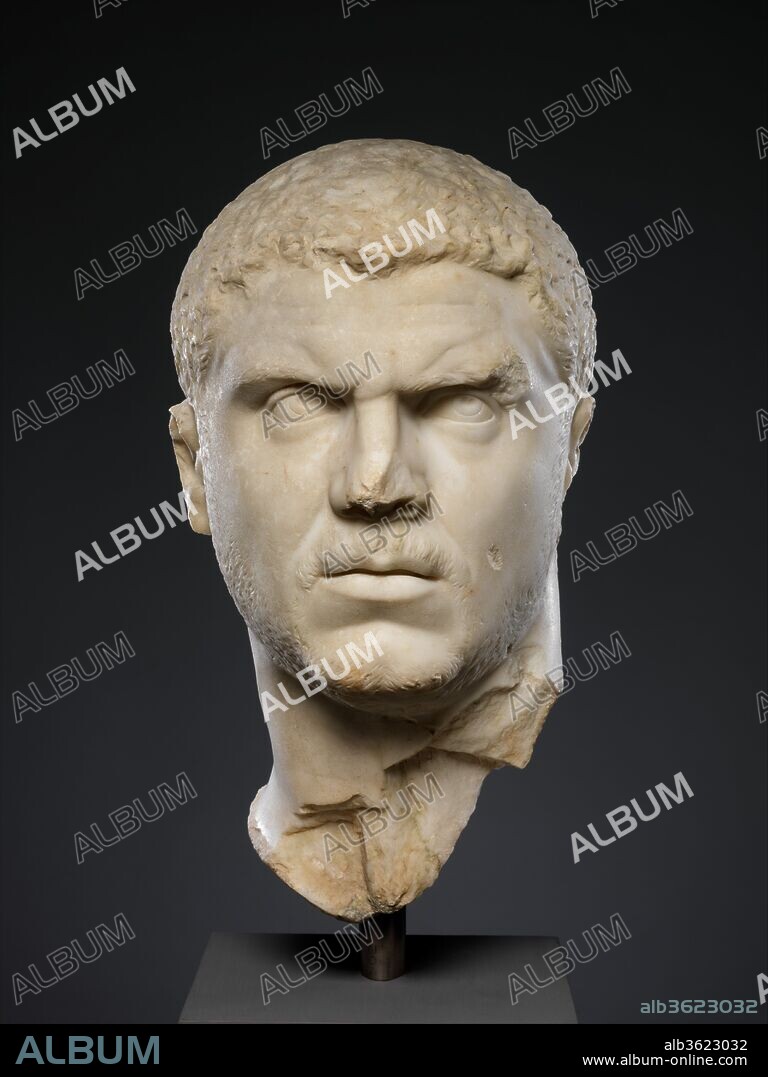alb3623032
Marble portrait of the emperor Caracalla

|
Añadir a otro lightbox |
|
Añadir a otro lightbox |



¿Ya tienes cuenta? Iniciar sesión
¿No tienes cuenta? Regístrate
Compra esta imagen.
Selecciona el uso:

Título:
Marble portrait of the emperor Caracalla
Descripción:
Ver traducción automática
Marble portrait of the emperor Caracalla. Culture: Roman. Dimensions: H. 14 1/4 in. ( 36.2 cm). Date: A.D. 212-217.
Caracalla took the official name of M. Aurelius Antoninus Pius as part of the Severan dynasty's attempt to appear as the legitimate and worthy successors of the secondcentury Antonine emperors. Despite this, in his official portraiture, he abandoned the luxuriant hair and beard of his predecessors for a military style characterized by closely cropped curls and a stubble beard. An ancient source records that on his deathbed, his father Septimius Severus advised Caracalla to "enrich the soldiers and despise everyone else." This finely carved head is a powerful rendering of the official portrait and was probably produced at an imperial
workshop, since the statue fragments are said to have been found in Rome. It is from a statue, the legs of which also survive and are displayed in the Study Collection on the Mezzanine Floor.
Técnica/material:
MARMOL
Periodo:
Severan
Museo:
Metropolitan Museum of Art, New York, USA
Localización:
ROMAN EMPIRE
Crédito:
Album
Autorizaciones:
Tamaño imagen:
3202 x 4268 px | 39.1 MB
Tamaño impresión:
27.1 x 36.1 cm | 10.7 x 14.2 in (300 dpi)
Palabras clave:


 Pinterest
Pinterest Twitter
Twitter Facebook
Facebook Copiar enlace
Copiar enlace Email
Email
